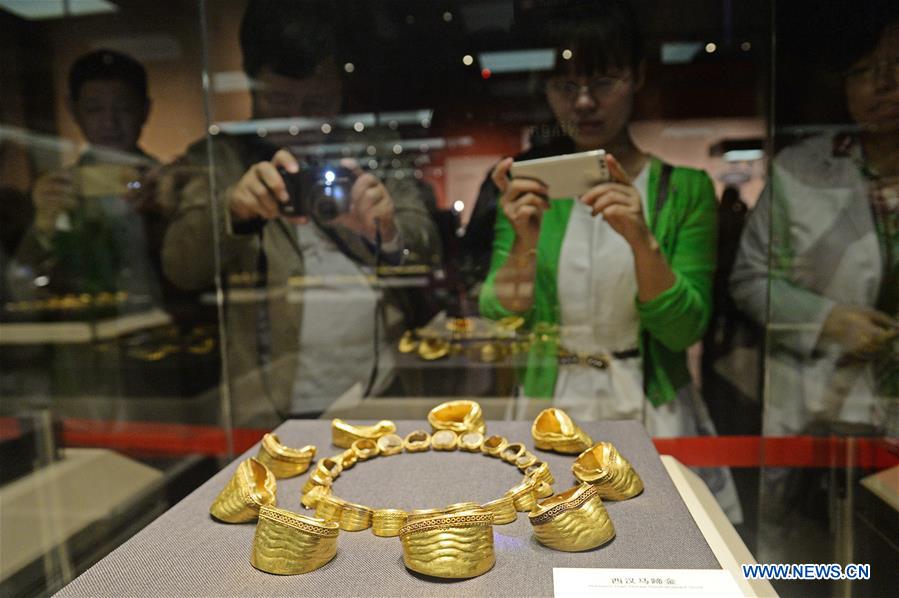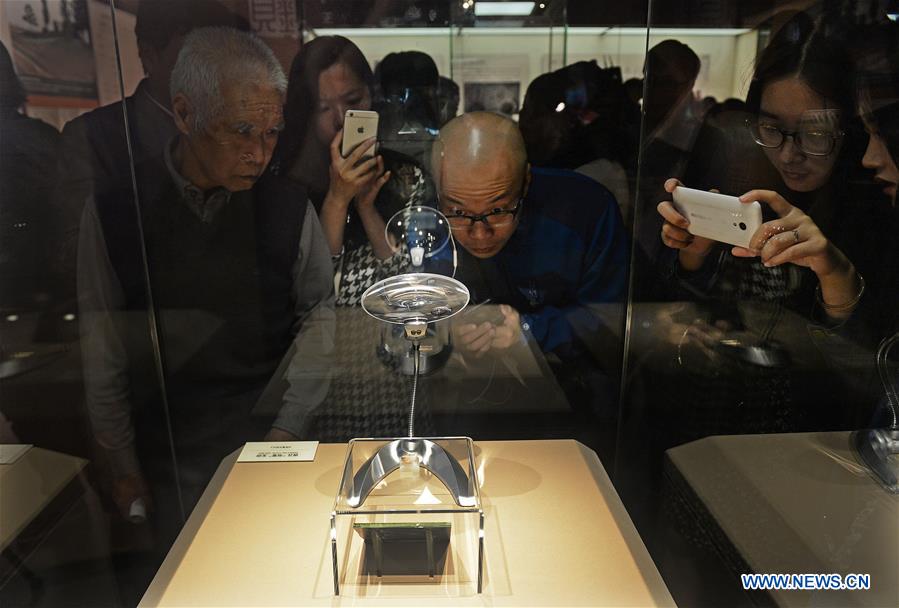Haihunhou, or the Marquis of Haihun, was a Chinese emperor back in the Han Dynasty. And even though his reignship only lasted two weeks, his burial site is one of the greatest archaeological finds of all time.

Visitors view hoof-shaped gold wares at an exhibition in Jiangxi Provincial Museum in Nanchang, capital of east China's Jiangxi Province, Oct. 11, 2016. The exhibition displayed 922 cultural relics unearthed from the 2,000-year-old tomb of Marquis of Haihun, who had a short-lived reign of 27 days as an emperor of Western Han Dynasty (206 BC -- 24 AD). (Xinhua/Wan Xiang)
Five years of excavation have unearthed more than 20,000 pieces of relics, even surpassing the star site known as Ma Wangdui in China. Just as the excavation is coming to an end, archeologists have again made some surprising new discoveries.
The Haihunhou tomb is the most well-preserved Western Han Dynasty (206 BC-AD 24) cemetery, with the most intact structure, distinct layout and complete sacrificial system.
After five years of excavation, over 10,000 pieces of precious relics were unearthed, including bronze wares, gold and silver wares, jade wares, bamboo slips and inscribed wooden tablets.
The main coffin of Liu He has been cleaned. The remains of Liu He can hardly be seen in the inner coffin accompanied by gilded lacquer boxes. A jade pillow, jade pendant, jade sword and other jade items decorate the body, along with a jade seal with the inscription "Liu He."
The remains of Liu He with teeth still in tact lie on a gilded glass mat on a bedding of 100 pieces of gold pieces.
So far, the number of goldwares unearthed from the Haihunhou tomb has reached 478, the largest in China's archeological history. X-Ray imaging also revealed delicate agate beads, gilded bronze boxes and jade-decorated bronze plaques on the inside of the remaining lacquer boxes in the coffin.

Visitors view a jade seal at an exhibition in Jiangxi Provincial Museum in Nanchang, capital of east China's Jiangxi Province, Oct. 11, 2016. The exhibition displayed 922 cultural relics unearthed from the 2,000-year-old tomb of Marquis of Haihun, who had a short-lived reign of 27 days as an emperor of Western Han Dynasty (206 BC -- 24 AD). (Xinhua/Wan Xiang)
Aarcheologists have successfully examined more than 5,000 bamboo slips, and through infrared scanning, the fated handwriting has once again becoming visible. Initial interpretation suggests that the contents are from ancient books such as The Analects of Confucius, The Book of Changes, The Book of Rites as well as those on medicine.
The bamboo scripts will be further solidified, cleaned and scanned, and the preliminary protection and data extraction work will wrap up before the end of 2016. The exact messages in these ancient writings will become clear as soon as next year.















